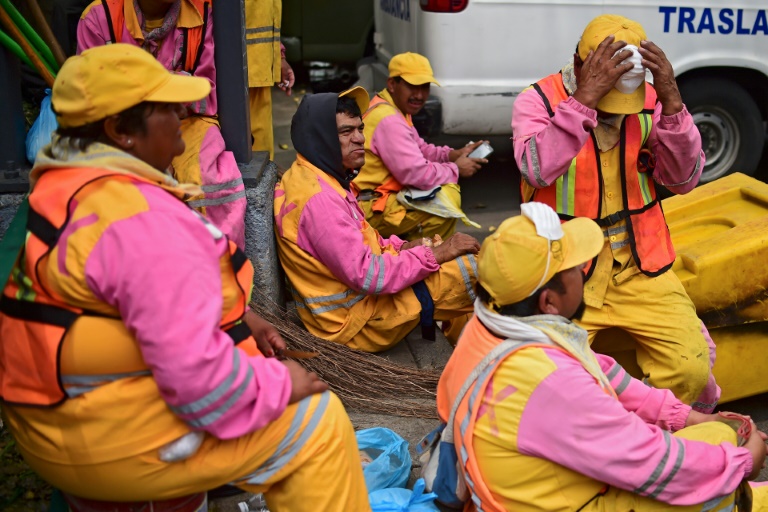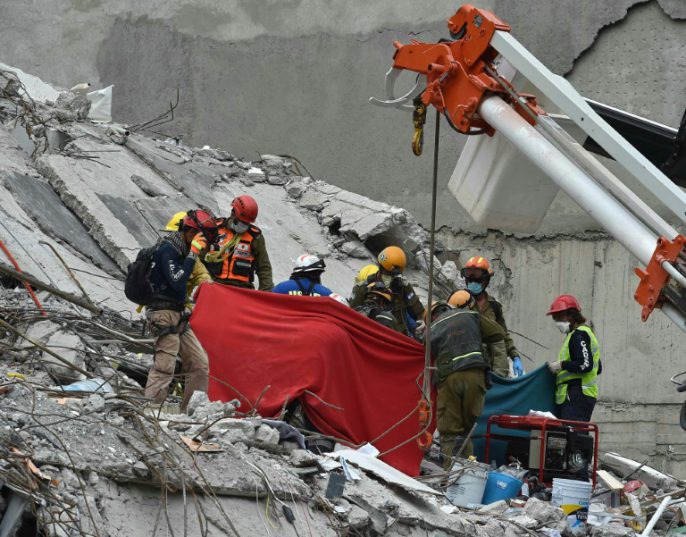‘Not really a flight risk’: Court orders fraud accused Zimbabwean’s release on R5k bail in appeal
Others at this particular scene of angst in the upscale Roma neighborhood of Mexico City are too upset to talk, even.
But everyone has a story, sometimes with an agonizing hint of if-only, like the man whose father stayed up on the fourth floor as a co-worker left for lunch — intending to catch up with him in a minute. The co-worker made it out safely. The man’s father did not.
Time is of the essence on day three of the search for survivors of the latest tremor in quake-prone Mexico: a 7.1 monster that has killed more than 230 people. After 72 hours, efforts to find people still alive tend to be called off and the bulldozers roll in.
For now, the distraught loved ones of those trapped in what could become a cement coffin are clinging to hope. Around 70 people were in the building when the quake hit Tuesday at 1:14 pm.
Across the street, Samuel Torres, 25, has a rosary wrapped around his wrist and prays as he waits for news of a friend, Karen Nallely Flores, who worked in an accounting firm housed on the fourth floor — the top one in the building.
Torres rushed to the scene Wednesday after seeing it and the neighborhood in the news, and he spent the night here, waiting and hoping.
“Apparently everyone inside is alive,” Torres says as he looks at the mound of rubble on the other side of Alvaro Obregon Street, where professional rescue teams and soldiers are at work. “It seems there is much reason for hope.”
– ‘Go ahead, I’ll catch up’ –

As the rescue effort presses on, relatives of those missing since Tuesday’s quake are worried because after 72 hours the drive to find people still alive tends to be called off so demolition can begin
So far 28 people have been rescued from the building. Authorities refuse to say how many might still be alive in that awful mess of concrete, twisted metal and broken glass.
Gustavo Caballero, 50, turns his back to the building and says he is convinced his father David, a 70-year-old electrician, is buried alive in there.
Caballero tells this story, as recounted to him by a co-worker of his father: David Caballero and the other man were up on the fourth floor installing video cameras. At lunch time, as they prepared to leave for something to eat, the co-worker departed first to feed a parking meter set to expire at 1:15.
“My father told him, ‘go ahead, I’ll catch up.’ The other man took the elevator and managed to get out but my father remained upstairs on the fourth floor,” says Caballero.
He said he is hopeful because his father was on the top floor. That way, presumably, only the ceiling caved in on him, not the entire building or a big part of it.
“It would just be a matter of lifting one slab,” he said, insisting he would never give up hope. “In fact, I told my mother, we will not leave until we find him,” says Caballero.
As he speaks, fists shoot up into the air — the signal for everybody to hush up so rescuers can listen for signs of life.
– 72 hours and time running out –
As friends and families wait in anguish, hundreds of volunteers wearing masks against the dust of the crushed building work to clear rubble or hand out food to relatives and rescue crews.
Suddenly, some of them rush toward the building, carrying beams and boards.
“Doctors! doctors!,” someone screams out a bit later, passing on instructions coming from the buzz of rescue activity at ground zero.
Things speed up as volunteers run toward the ruins. But soon, people start talking again, breaking the silence, and the fists are lowered. It was a false alarm.
And the clock keeps ticking. The 72 hours are running out. People hoping against hope are already handing out fliers pleading for more time. “No heavy machinery,” they read.
– ‘Double or triple agony’-

The quake hit on the anniversary of a devastating 1985 tremor that killed some 10,000 people in the sprawling megolopolis that is Mexico City
A petite woman named Pola Diaz, age 53, also asks for more time. She is what is known in Spanish as a “topo,” or mole: smaller people who can squeeze through holes and cracks at earthquake rescue sites in search of survivors.
These agile people found their calling in a devastating earthquake in 1985 that killed at least 10,000 in Mexico City.
“I never thought this would happen again in my city,” says Diaz.
She chokes back tears as she notes that just 24 hours remain until the feared 72 hour period ends — at midday Friday — and rescue work makes way for demolition.
“I would ask that this rule not be applied so strictly, that there be more flexibility,” said Diaz. “That we think not just about the people who are trapped but about those who are outside with a double or triple agony because they have one or more relatives missing, even buried.”
Download our app and read this and other great stories on the move. Available for Android and iOS.